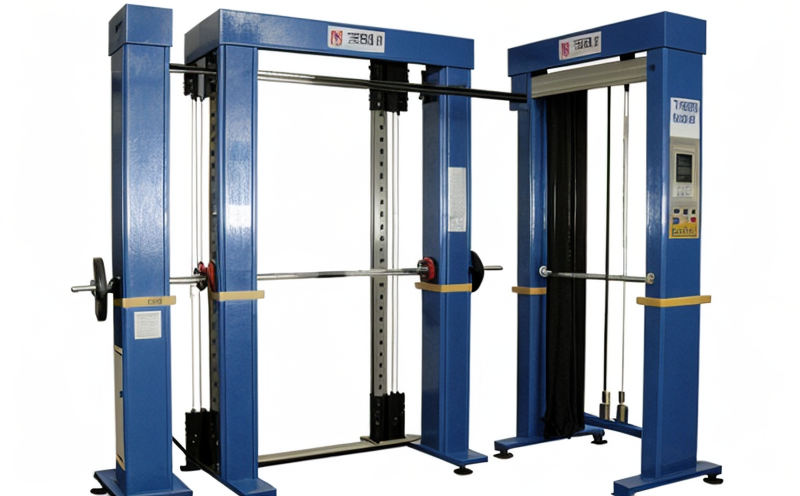BS 2471 Method for determination of fabric weight
The British Standard (BS) 2471 specifies a method for determining the fabric weight, which is an essential parameter in textile quality control and product development. Fabric weight directly influences garment fit, comfort, and overall performance. This standard is particularly relevant to the weaved sector of the textile industry where precision in material selection and manufacturing processes is paramount.
The process described in BS 2471 involves measuring the weight per unit area of a fabric sample using a calibrated balance. The test method ensures consistency across different samples, enabling accurate comparisons that are critical for quality assurance. Fabric weight is not just an aesthetic or functional attribute; it also plays a role in determining the durability and suitability of textiles for various applications.
For instance, heavier fabrics may be more durable but less flexible than lighter ones. This method allows manufacturers to fine-tune their processes to meet specific market demands while ensuring compliance with industry standards. The test can be conducted on a range of fabrics including cotton, polyester blends, and synthetic fibers, making it versatile for different production environments.
The BS 2471 process involves several key steps: selecting the correct balance for accuracy, preparing the sample correctly to avoid bias, and conducting multiple trials to ensure reliability. The standard specifies that samples should be cut from a minimum of five different areas within each fabric piece to account for variations in weight distribution.
Once prepared, the samples are placed on the balance, and their weights are recorded. The average weight is calculated after discarding outliers. This method ensures that the results are as accurate as possible, minimizing errors due to sample variability. In addition, this standard also provides guidelines for reporting the findings in a standardized format, which aids in effective communication between different stakeholders within the supply chain.
Understanding fabric weight is crucial not only for manufacturers but also for retailers and consumers alike. By accurately determining fabric weight according to BS 2471, companies can ensure that their products meet required specifications, enhancing customer satisfaction and brand reputation. Furthermore, precise measurement helps in optimizing raw material usage, reducing waste, and ultimately lowering production costs.
It is important to note that while this method focuses on fabric weight determination, it forms part of a broader quality assurance framework that includes other tests such as tensile strength and tear resistance. These combined tests provide comprehensive insights into the overall performance and suitability of textiles for various uses.
Applied Standards
- BS EN ISO 9001:2015 Quality Management Systems – Requirements. Ensures the laboratory adheres to internationally recognized quality management principles, ensuring accurate and reliable results.
- ASTM D3776-18 Standard Test Method for Determination of Fabric Weight. Offers a parallel approach that can be used interchangeably with BS 2471, providing flexibility in testing protocols.
The application of these standards not only enhances the reliability and accuracy of our tests but also ensures they are aligned with global best practices. This alignment is crucial for businesses operating in a competitive international market where consistency and precision are key factors.
International Acceptance and Recognition
The BS 2471 method enjoys widespread acceptance across the textile industry, recognized by major players worldwide. Its use is not limited to UK-based manufacturers but extends globally, making it a standard reference for fabric weight determination.
Laboratories that comply with this standard are often preferred partners due to their reputation for accuracy and reliability. This recognition translates into greater trust from clients who rely on consistent and high-quality results. Moreover, adherence to such standards helps companies achieve international certifications like ISO 9001, which further boosts their credibility in the market.
The standard's global acceptance also facilitates smoother supply chain operations, as it provides a common language for communication between different countries and regions. This uniformity is particularly beneficial during audits or when engaging in collaborative projects with international partners.
Environmental and Sustainability Contributions
- Eco-friendly practices: By ensuring accurate measurements, labs using BS 2471 contribute to reducing waste through efficient resource utilization. Accurate weight determination helps in optimizing the use of raw materials.
- Sustainable supply chain: Compliance with international standards like BS 2471 supports a sustainable supply chain by ensuring that all participants are working towards consistent quality and environmental responsibility.
The method also plays a role in promoting circular economy principles by facilitating the recycling of textile materials. Knowing the exact weight allows for better sorting and reprocessing, thus extending the life cycle of fabrics and reducing landfill waste.





